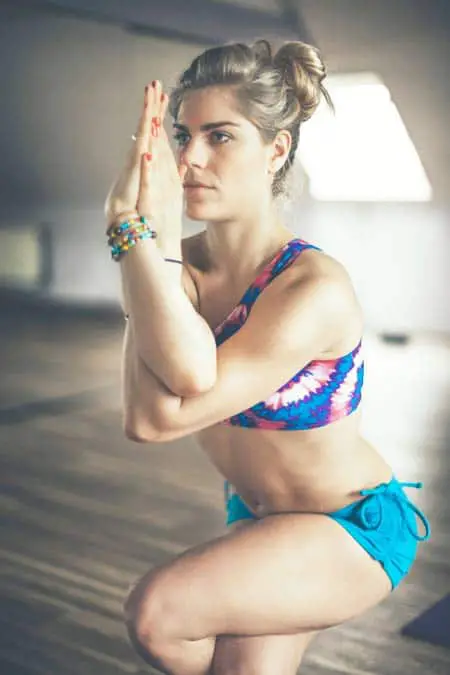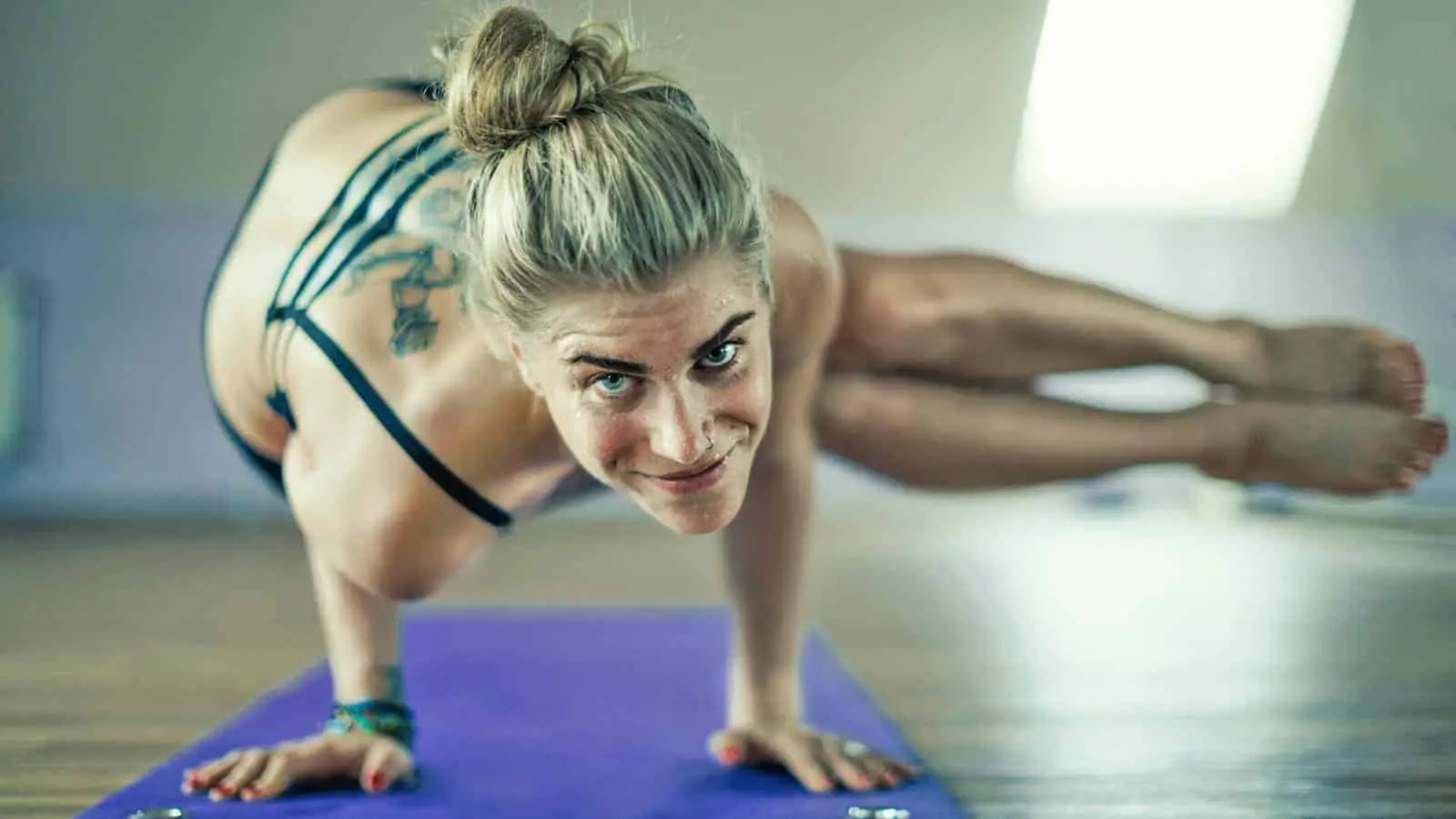Hot yoga is a yoga practice done in a hot, humid room. The heat leads to higher-performance than traditional yoga and generates more sweat, releasing more toxins. There are many benefits to doing hot yoga, but one might question whether you can practice hot yoga everyday.
You can do hot yoga every day as long as you are sure you hydrate, fuel your body, and rest between practices. However, it is important to consult with your doctor before practicing hot yoga if you have any medical conditions.
In this article, we will discuss the benefits of hot yoga. We will also discuss the ways to care for yourself and your body to be sure to experience the full benefits and to be able to sustain a daily practice. Finally, advice will be given to determine whether hot yoga is the right choice for you.
Can You Do Hot Yoga Too Much?
As you read this article, you will learn how to practice hot yoga safely. If you are practicing safely, you can not do hot yoga too much. However, it is important to note, if you have a preexisting or medical condition, including pregnancy, you will want to limit the amount you are practicing hot yoga. The heat and quantity of sweat produced can have adverse effects on those with these sorts of conditions.
Benefits of Hot Yoga
Before diving into what a daily hot yoga practice might look like, let’s discuss the general benefits of hot yoga.
Improves Flexibility
The heat generated in a hot yoga studio allows for a greater range of motion, meaning you will achieve yoga poses easier and more effectively. A 2013 study found that participants who did Bikram yoga for eight weeks were more flexible in their shoulders, hamstrings, and back than the control group who did traditional yoga. (Bikram yoga is a formal name for a commonly practiced hot yoga – classes are 90-minutes long in a room of 40 degrees Celcius /105 degrees Fahrenheit and 40% humidity.)
Assists in Weight Loss
An average person will burn around 180 calories during an hour-long yoga class. But according to research, a 90-minute Bikram yoga class will burn roughly 400 calories.
Increases Bone Density
As you support your weight in a yoga pose, you are building bone density. This is a considerable benefit of yoga for older adults as bone density starts to decline. A 2014 study of premenopausal women found increased bone density in the lower back, hips, and neck over a 5-year period of practicing hot yoga.
Improves Heart Health
Practicing yoga in high heat leads to a more intense workout giving your heart, lungs, and muscles all greater exercise. Hot yoga increases respiration and cardiovascular activity. A study done in 2014 found that one hot yoga class results in the same cardiovascular boost as you would get from a brisk, 5km / 3.5-mile walk. Hot yoga is a more cardiovascular type exercise than one might think.
Safely Practicing Hot Yoga Everyday
Obviously, there are numerous benefits to doing hot yoga, and some may argue it is a more effective workout than traditional yoga. However, it would help if you took some safety measures to be sure you are taking care of your body to be best able to experience all the benefits hot yoga has to offer.
Before dedicating yourself to a daily practice, you must ease yourself into hot yoga. Although hot yoga is safe for beginners who do research, the most common way to adopt a hot yoga practice is to start with traditional yoga. Once you have committed to a strong practice, start integrating hot yoga into your routine a couple of times a week.
Each body reacts differently to the sweltering heat of hot yoga studios. It will take time to determine how your body reacts and the best way to rehydrate. The heat will also make your muscles more limber, and this can also lead to overstretching and potentially injuring your tendons and ligaments. Hot yoga is a practice, and before you commit to it daily, it’s important to familiarize yourself and your body.
Below, find some specific tips to pay most attention to most safely practice hot yoga.
Hydrate Before, During, and After
Because of the amount, you will sweat during hot yoga, and hydration is, of course, key to a healthy practice. Water is the best liquid to rehydrate with, but when you also supplement your water intake with sports drinks, coconut water, or other beverages with electrolytes.

Your body will be especially dependent on you when practicing daily, focusing heavily on hydration since the body won’t have any long, naturally-occurring recovery times. Here is a breakdown of an effective way to hydrate to prepare for and recover from a hot yoga class:
- Start being intentional about your hydration two hours before class. Drink about 2 glasses (20 ounces/0.6ml) of water two hours before class and an additional 1 glass (10 ounces/0.3ml) one hour before class.
- Take drinks throughout your class. A good rule of thumb is to take a drink every 15 minutes.
- Immediately after your class, this is likely the best time to drink an electrolyte replacement like a sports drink, coconut water, or even a glass of water with a pinch of salt and a wedge of lemon. Drink about 2 glasses (20 ounces/0.6ml) immediately after the class.
- Continue to rehydrate during all other parts of the day. Pay attention to your body’s cues. If you are feeling thirsty, it is likely because you are dehydrated. If you practice hot yoga so frequently, you will be very thirsty, so honor those cues.
There are many risks associated with dehydration. You may start to feel nauseous, have intense headaches, and greatly affect blood pressure making you feel dizzy. An important risk to keep in mind is when you are dehydrated; your body starts to lose its ability to cool itself down, which obviously is very dangerous when practicing hot yoga. You can safely establish a daily practice, but really focusing on your hydration will be vital to doing so in a healthy way.
Get Enough Rest
Hot yoga is a strenuous workout, so allowing your body a full night of sleep will be essential in the recovery process. Some sleep experts who study exercise science recommend that adult athletes should sleep one hour for every two hours they are awake during the day. Without allowing your body to get the optimal amount of sleep, many benefits to daily hot yoga practice will be lost.
Nourish and Refuel Your Body
Again, honoring your body’s cues, it is important to pay attention to any hunger your body feels before or after yoga classes. Some things to pay attention to with your nutrition as you are practicing hot yoga:
- Eat easily digestible food, especially before class. Steer away from things like beans, dairy products, and whole grains.
- Throughout the day, focus on getting carbohydrates and proteins. Before your class, combinations like apples and peanut butter or dates with almond butter are good options.
- Foods like oranges and watermelon have high water content and can assist with rehydration.
As you burn many calories, it is important to refuel your body not to become exhausted. This will help you sustain your daily practice.
When Daily Yoga Isn’t Safe

As mentioned, hot yoga is not the safest choice for everyone—especially people with preexisting conditions, particularly high blood pressure. If you have a preexisting condition, you must consult with your health care provider before starting hot yoga. This also includes pregnant women.
A gift of yoga is learning the mind-body connection through mindfulness. With any exercise, it is important to be mindful of the way your body is feeling. Not everyone will tolerate hot yoga in the same way. Honor your body if a daily practice is exhausting or your body feels at all out of sorts.
And again, it is likely safest to dedicate yourself to a daily hot yoga practice if you are an experienced yogi. If not, give your body time to ease into the practice and understand the ways you need to care for your body before committing to such a rigorous routine.
Final Thoughts
You can safely dedicate yourself to a daily hot yoga practice as an experienced yogi if you carefully pay attention to your body’s needs. The benefits to a healthy practice are endless but be sure you use the skills yoga taught you to frequently check in with your body and honor its needs to ensure your daily practice is beneficial.








